Physical Address
304 North Cardinal St.
Dorchester Center, MA 02124
The lips, which are located at the entrance to the alimentary tract, are essential for a variety of complex tasks, including articulation of speech, facial expression, and the oral phase of deglutition. The anatomic structure of the lips is complex; they consist of skin, mucosa, minor salivary glands, muscles, and neurovascular structures. Accordingly, a variety of neoplasms can arise in the lips from these structures. Because sun exposure is the most prominent risk factor, epithelial neoplasms are by far the most common cancers involving the lips. Therefore fair-skinned persons and those living in the sun belt have the highest risk for lip cancers. This risk can be as high as 13.5 per 100,000 people. Although lip cancers develop in men more frequently than women, changing behaviors with regard to sun exposure have resulted in an increase in the proportion of women with lip cancer in many parts of the world.
The lower lip is the most frequent site for cancers. Only 7% of lip cancers arise in the upper lip, and 4% arise at the oral commissure ( Fig. 7.1 ). Most cancers occur in the lower lip because compared with the upper lip, the projecting vermilion border of the lower lip receives more sun exposure. Other factors that contribute to the risk of lip cancer include alcohol and tobacco use, especially when direct contact with tobacco is present, as with pipe and cigar smoking.
Squamous cell carcinoma is the most common malignant tumor of the lips (95%). The site allocation and staging criteria for lip cancers have been recently revised. In the past the lips were included as one of the primary sites in the oral cavity; however, the clinical behavior of most lip cancers is closer to that of skin cancers than it is to that of the oral mucosa. Therefore in the most recent revision of the American Joint Committee on Cancer (AJCC) and the International Union Against Cancer (UICC) staging system (eighth edition), the lips are divided in two separate regions ( Fig. 7.2 ). The visible vermilion border covered by keratinizing squamous epithelium, or the “dry vermilion,” is staged according to the criteria for skin cancers. The lip mucosa that is in contact with each other (the lower and upper lip) and extending further on the labial mucosa, also called the “wet vermilion,” or mucusola lips containing minor salivary glands is staged as one of the sites in the oral cavity ( Fig. 7.3 ). Basal cell carcinomas, melanomas, and minor salivary gland cancers represent the next most common primary neoplasms of the lip. Soft tissue sarcomas are exceedingly rare.
Clinically, epithelial cancers of the visible vermilion border of the lip have a characteristic exophytic cauliflower-like or ulcerated, endophytic nodular appearance. They have varying degrees of infiltration of the underlying musculature and invasion of the overlying skin and/or labial mucosa ( Fig. 7.4 ). Minor salivary gland tumors of the lip present as slow-growing nodular masses that may be subcutaneous or submucosal ( Fig. 7.5 ). Soft tissue tumors also present as a subcutaneous or submucosal mass of varying consistency. Hemangiomas and lymphangiomas are characteristically soft and spongy in nature and usually manifest at an early age ( Fig. 7.6 ). Melanomas of the vermilion border or mucosa of the lips are usually pigmented but also may be amelanotic ( Fig. 7.7 ).
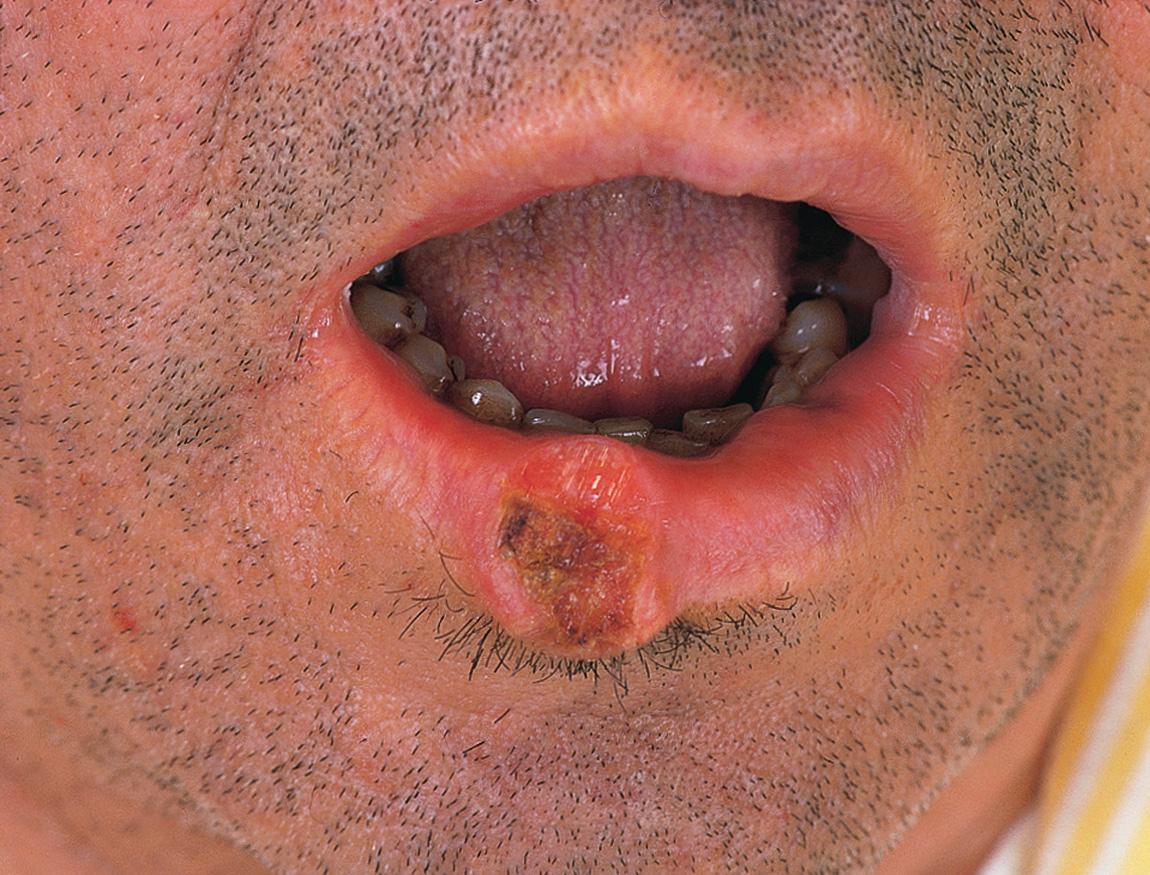
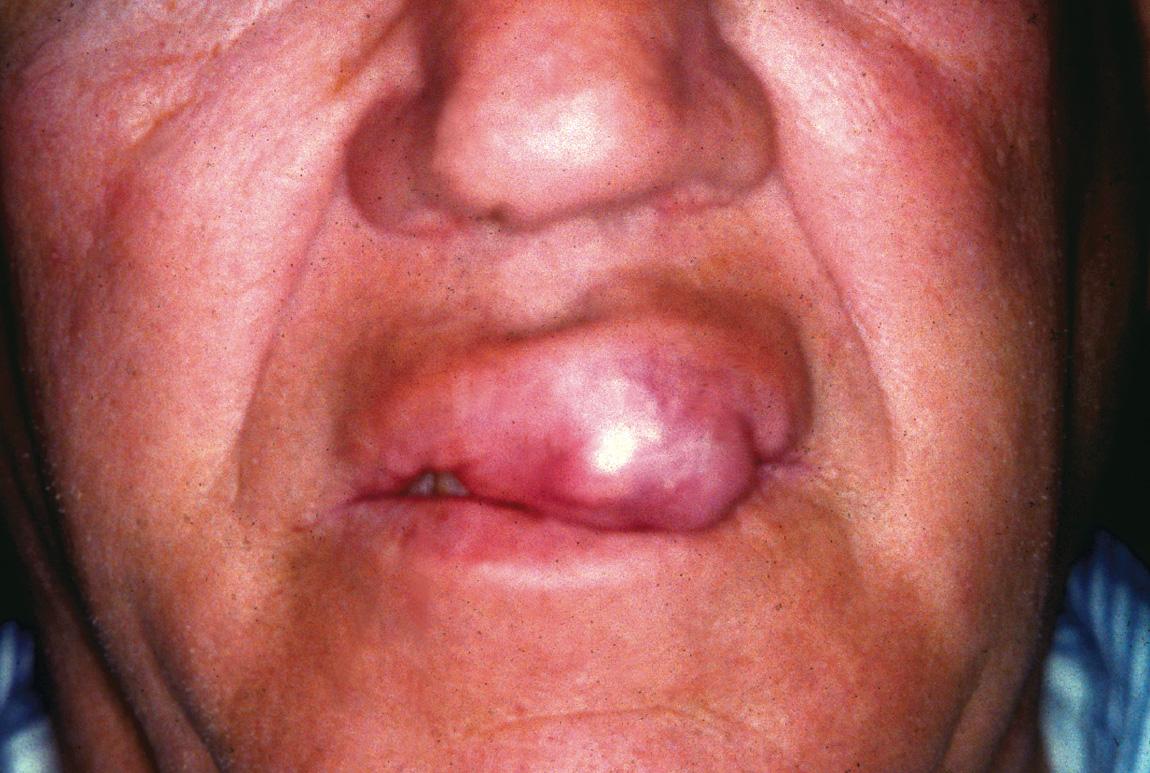
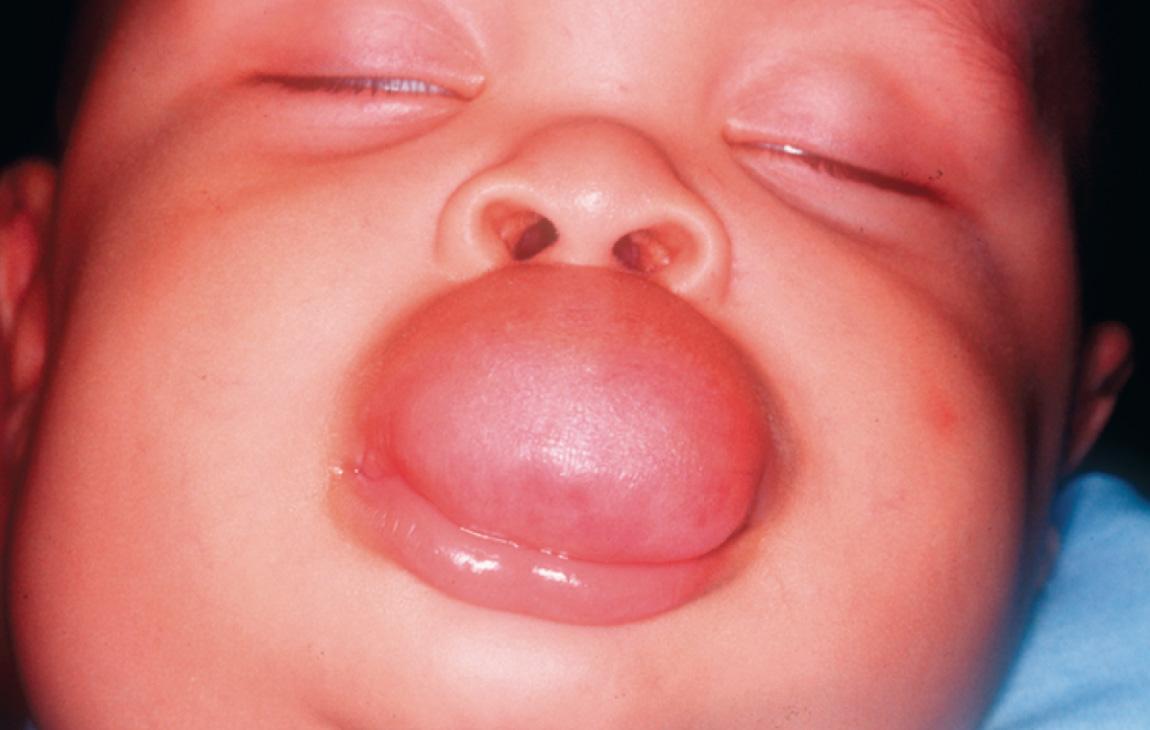
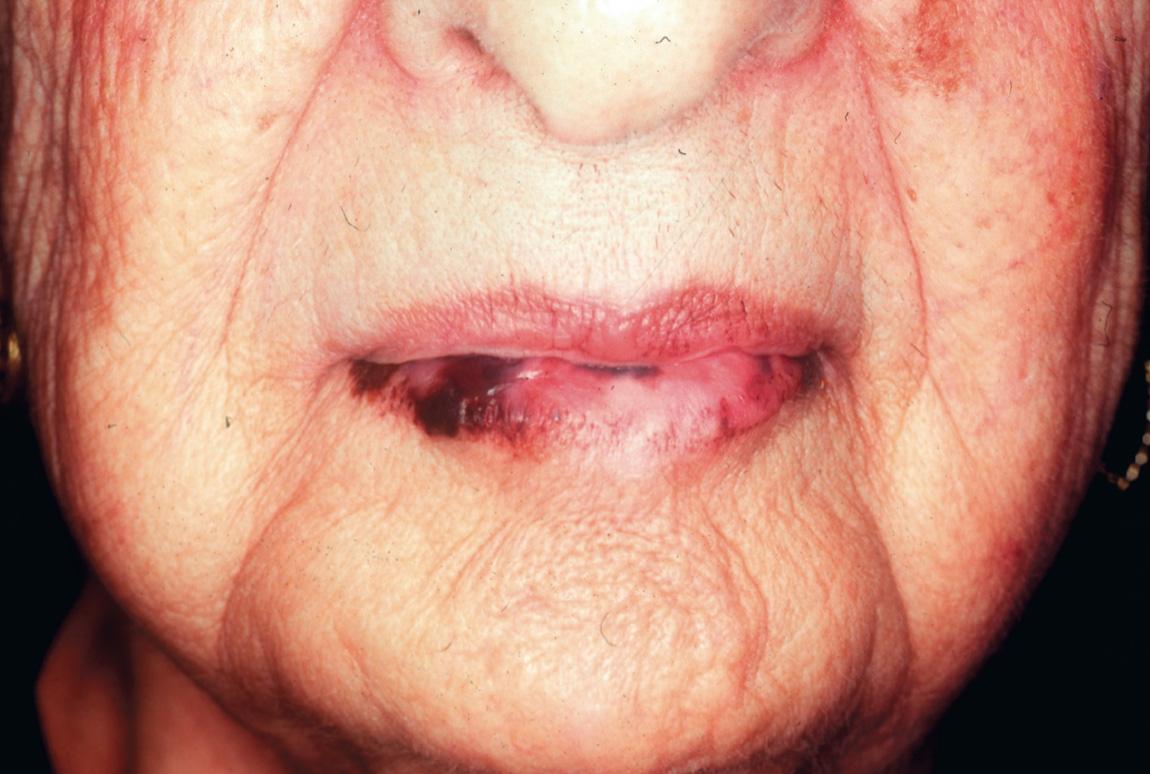
The lesion may involve a portion of the lower lip, the entire lower lip, the commissure of the oral cavity, or both the upper and lower lips ( Figs. 7.8 through 7.11 ). Many well-differentiated squamous carcinomas are associated with varying degrees of hyperkeratosis and leukoplakia of the vermilion border. These pathologic changes also should be considered part of the lesion in surgical treatment planning.
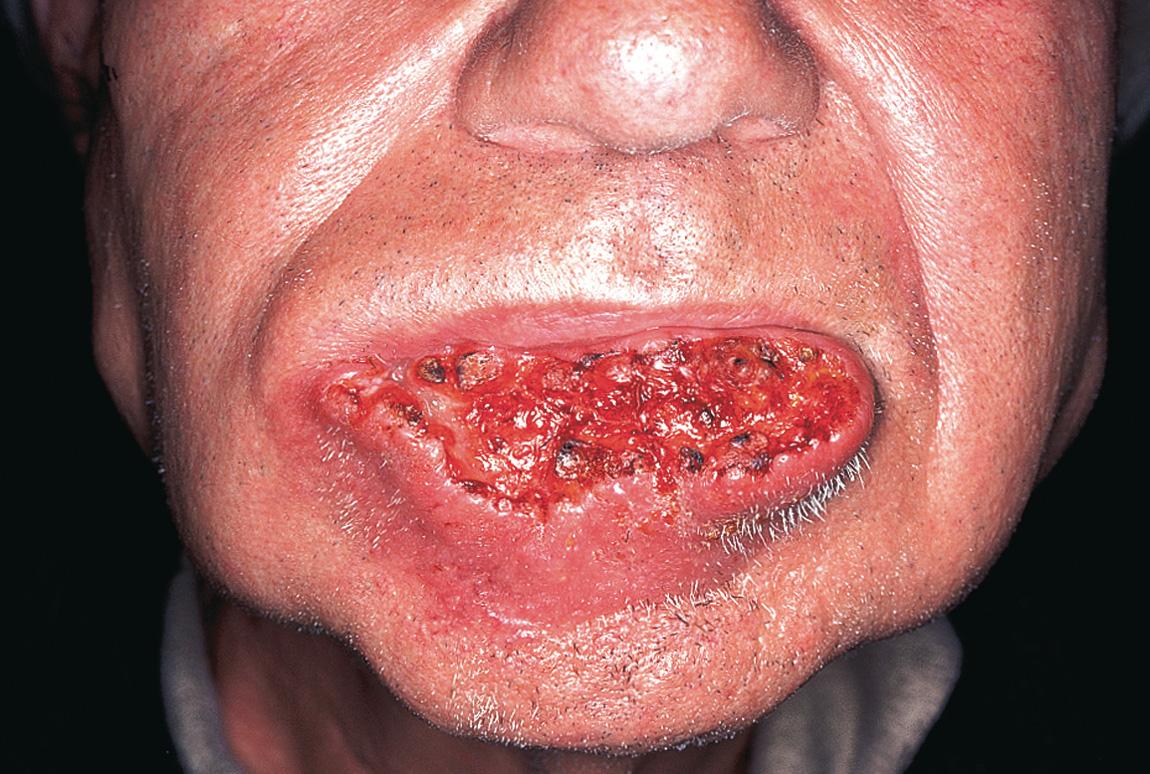
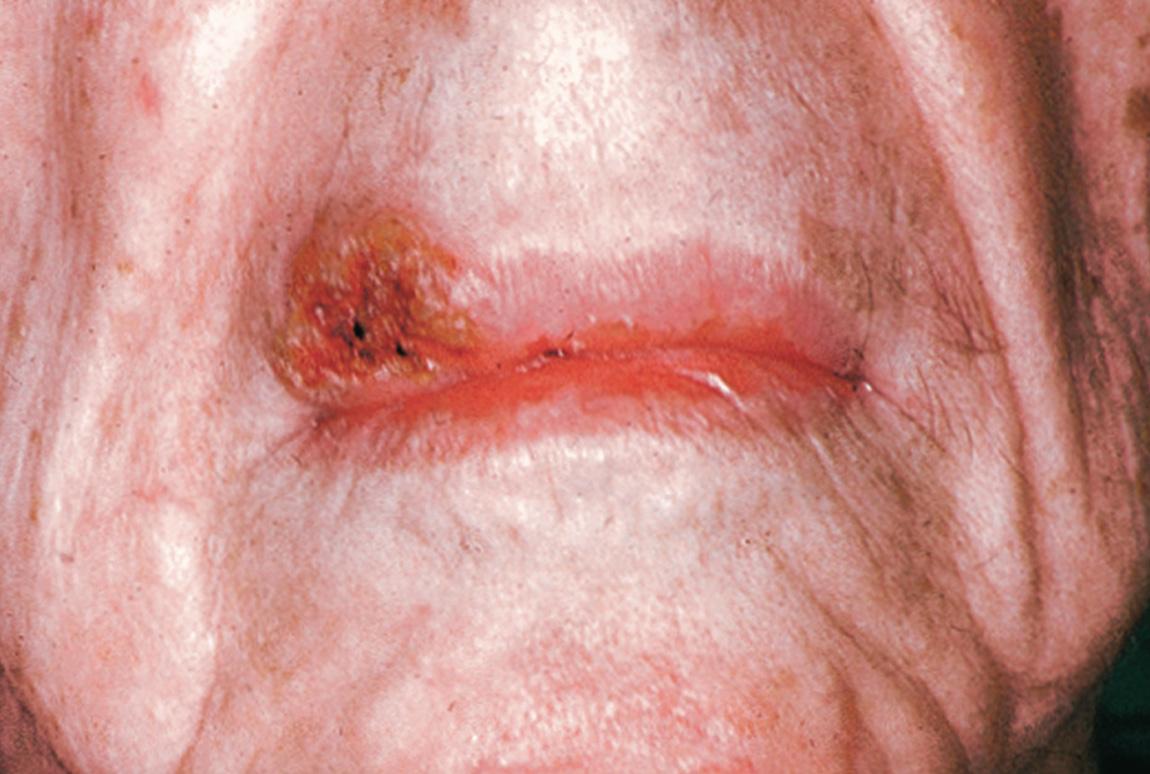
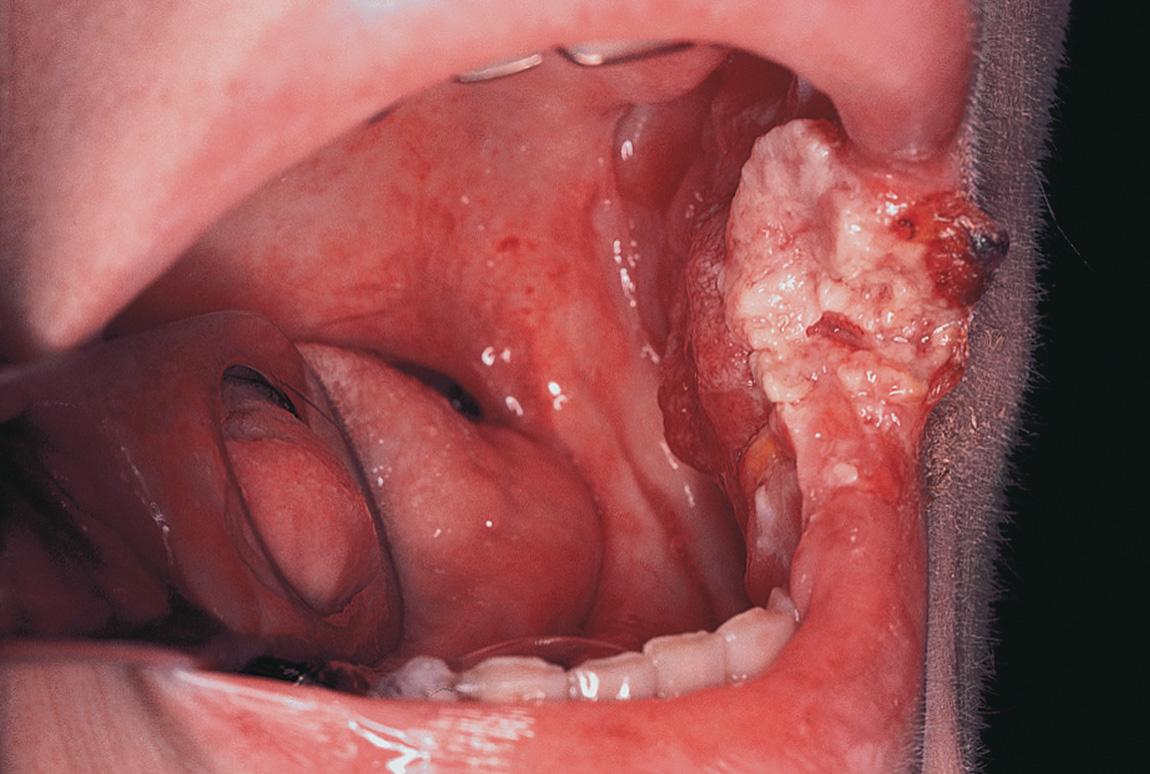
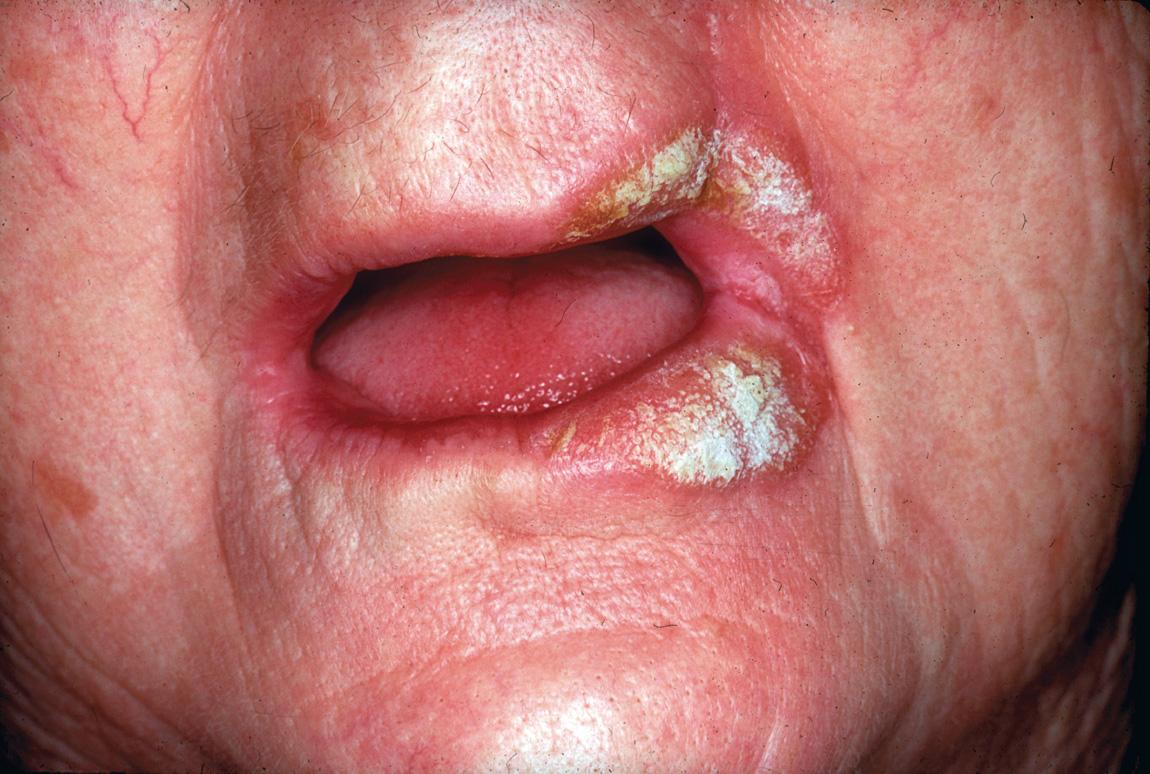
The recently revised staging criteria for primary cancer of the external/visible/dry vermilion border of the lip are similar to those for skin cancers, and those for the nonvisible/wet vermilion and labial mucosa are similar to those for mucosal cancers of the oral cavity (AJCC/UICC eighth edition Staging Manual). Most patients present with early-stage tumors. Only 10% of patients present with clinically palpable cervical lymph node metastasis. The stage distribution of patients with carcinoma of the lip at diagnosis is shown in Fig. 7.12 .
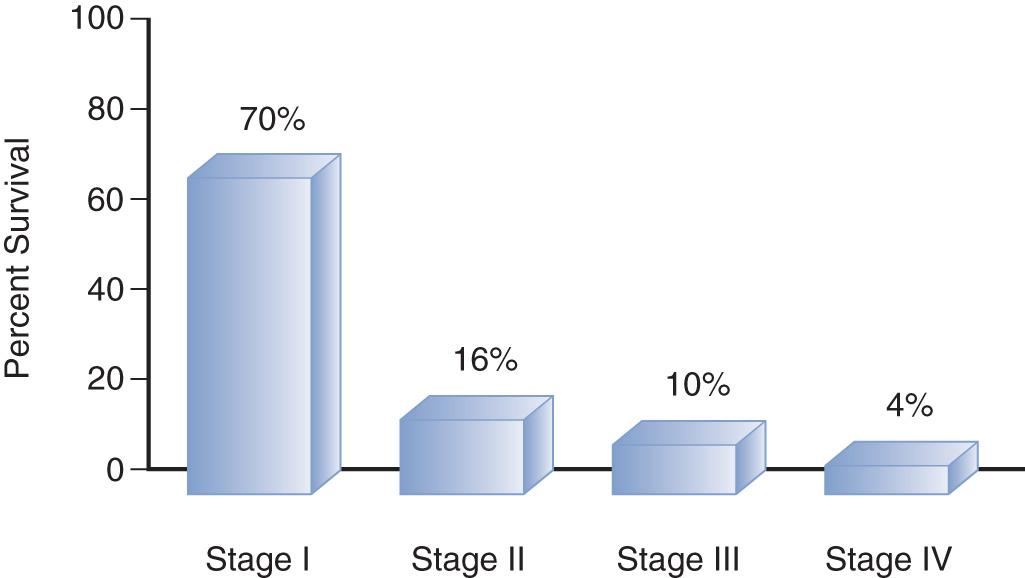
Radiographic workup of early-stage tumors of the lips is usually not required. However, advanced tumors of the lips, particularly those that are adherent to the adjacent bone, require radiographic evaluation to assess the extent of bone invasion. A high index of suspicion for invasion of the inferior alveolar nerve should be maintained for patients with numbness of the skin of the chin and lower lip. This phenomenon is most common in persons with neurotropic tumors, including adenoid cystic carcinoma, melanoma, and squamous carcinoma ( Fig. 7.13 ). Therefore detailed radiographic evaluation of the mandible is vitally important in treatment planning. Panoramic radiographs of the mandible provide a good initial assessment of the bone and mandibular canal ( Fig. 7.14 ). However, more detailed studies require a computed tomography (CT) scan or magnetic resonance imaging (MRI) for accurate delineation of the extent of bone invasion and for evaluation of invasion of the inferior alveolar canal or for demonstration of perineural invasion ( Fig. 7.15 ). MRI is particularly helpful in assessing bone invasion through alteration in the bone marrow signal, whereby the normal fatty signal is replaced by grayish tumor infiltration ( Fig. 7.16 ). Perineural invasion is demonstrated by enhancement of the inferior alveolar nerve on T2-weighted images. It also may show tumor extension through the foramen ovale into the middle cranial fossa.
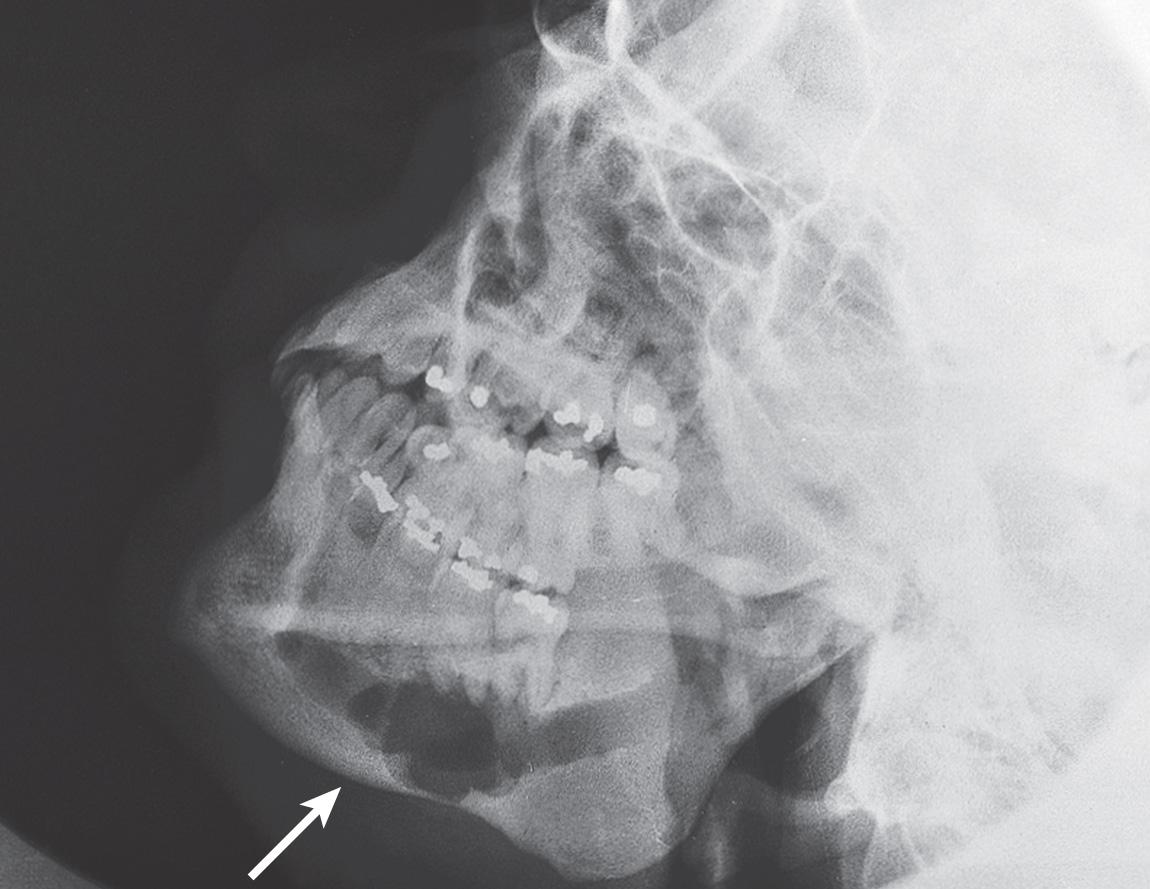
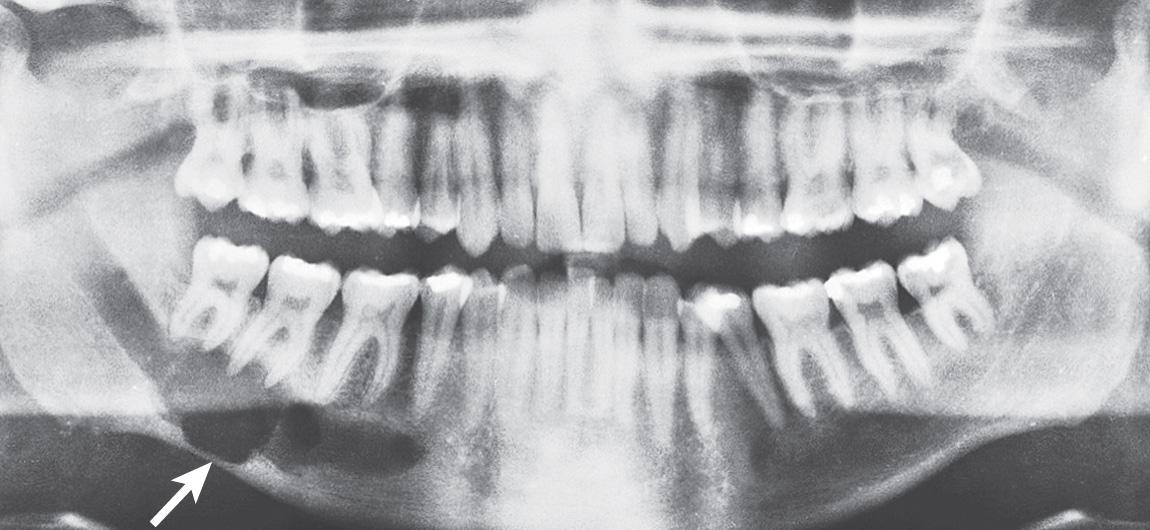
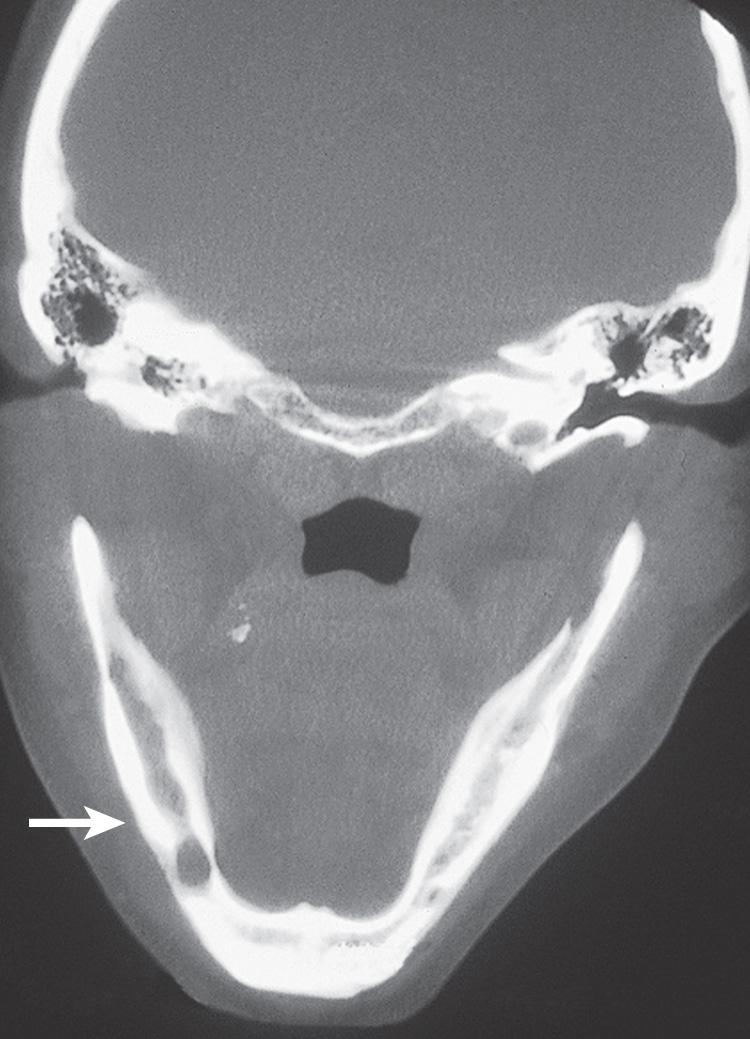
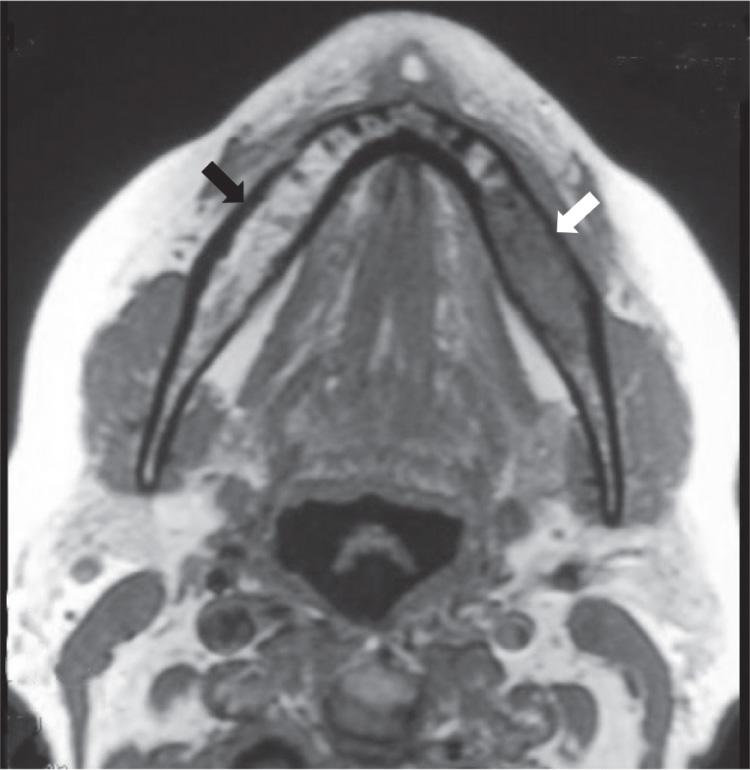
The obvious goal of therapy is long-term control of cancer with preservation of competency of the oral cavity and maintenance of aesthetic appearance of the lips. Small primary tumors of the lower or upper lip are very well controlled by either surgical excision or irradiation. Surgical excision for a small lesion is expeditious and leaves essentially no aesthetic or functional debility, even in the long term. In contrast, long-term sequelae of radiotherapy to the lip include atrophy of the skin and underlying musculature, resulting in indentation at the site of the primary tumor. Larger lesions require planned surgical resection with reconstruction, keeping in mind the aesthetics, function, and preservation of the nerve and blood supply to the remaining musculature of the lips to maintain facial expression. Although the lips have a rich lymphatic drainage to regional lymph nodes, metastatic dissemination is uncommon in early-stage tumors. Therefore elective treatment of regional lymph nodes is considered for only very advanced primary tumors.
The factors that affect the selection of initial therapy are related to the tumor and the patient ( Box 7.1 ). Tumor factors include the T stage (particularly bone invasion in T4 tumors), histology, extent of dysplastic vermilion surface, depth of infiltration of the labial musculature, and involvement of the oral commissure.
Tumor factors
Size (T-stage) of the primary tumor
Histology of the tumor
Extent of lip resection necessary
Availability of local tissues for reconstruction
Anticipated aesthetic and functional outcome of reconstructive surgery
Patient factors
Age
General medical condition
Compliance by the patient
Cost and convenience of treatment
In planning surgical treatment, preservation or restoration of oral competency and the size of the mouth opening as well as aesthetic appearance are crucial factors. These factors affect the ability to eat, clarity of speech, and facial expression. Small superficial lesions are easily managed by a simple wedge excision with primary repair, with excellent preservation of lip function and aesthetic appearance. Larger lesions of the lip can pose a reconstructive challenge. In general, local flaps from adjacent skin and soft tissues and the opposite lip often provide sufficient tissue for an excellent functional and aesthetic outcome. More extensive lesions that involve a large volume of lip or invasion of the underlying bone often require a composite resection with reconstruction using a composite free flap.
Patient-related factors include the general medical condition of the patient with regard to the safety of anesthesia and surgery, particularly when a major composite resection with free flap reconstruction is required. The age of the patient is an important factor in considering surgical treatment. Unlike young patients, older patients generally have lax lips, which permit primary closure or reconstruction with local flaps.
Definitive radiotherapy is equally effective as surgery in local control of early-stage epithelial malignancies of the lips such as basal cell and squamous cell carcinomas. However, radiotherapy is not effective in the treatment of melanoma, minor salivary gland carcinomas, and soft tissue tumors. In planning radiotherapy as definitive treatment, the status of adjacent dentition and the age of the patient are important considerations.
External beam radiation therapy with electrons generally is used for lesions confined to the skin and soft tissues of the lips. A therapeutic dose of 6600 cGy is delivered in conventional fractionation of 200 cGy per day in 33 treatments. Elective irradiation of regional lymph nodes is not recommended in early-stage tumors (T1 and T2). On the other hand, interstitial irradiation alone with iridium-192 implant also has been shown to be equally effective in local control of tumors of limited extent ( Figs. 7.17 through 7.19 ). In spite of excellent local control, irradiation is generally not recommended as the preferred treatment because of the long-term sequelae of radiotherapy. Skin dryness, soft tissue atrophy, and indentation of the vermilion border at the site of the primary tumor often result in a suboptimal long-term outcome. Therefore radiotherapy is recommended only in select situations.
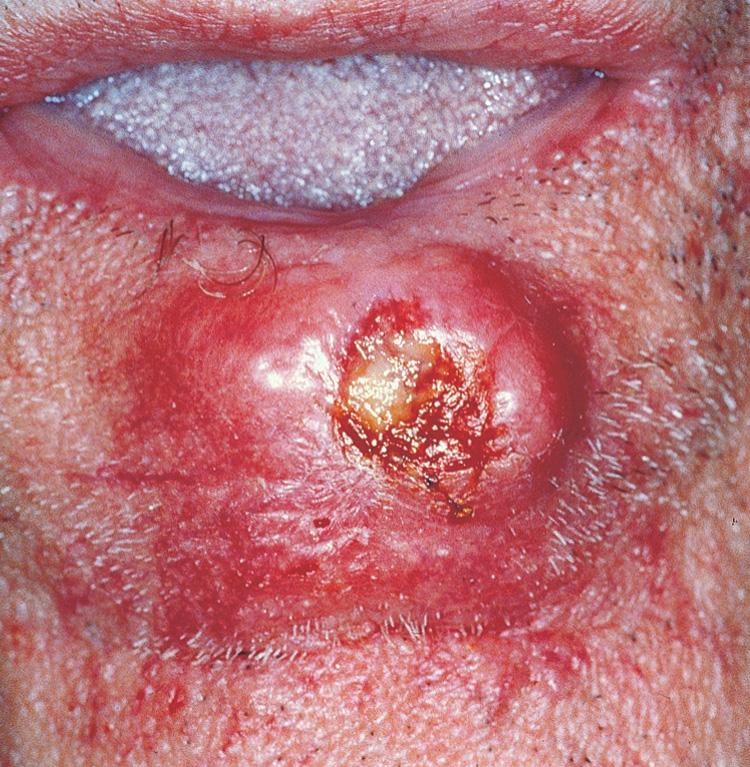
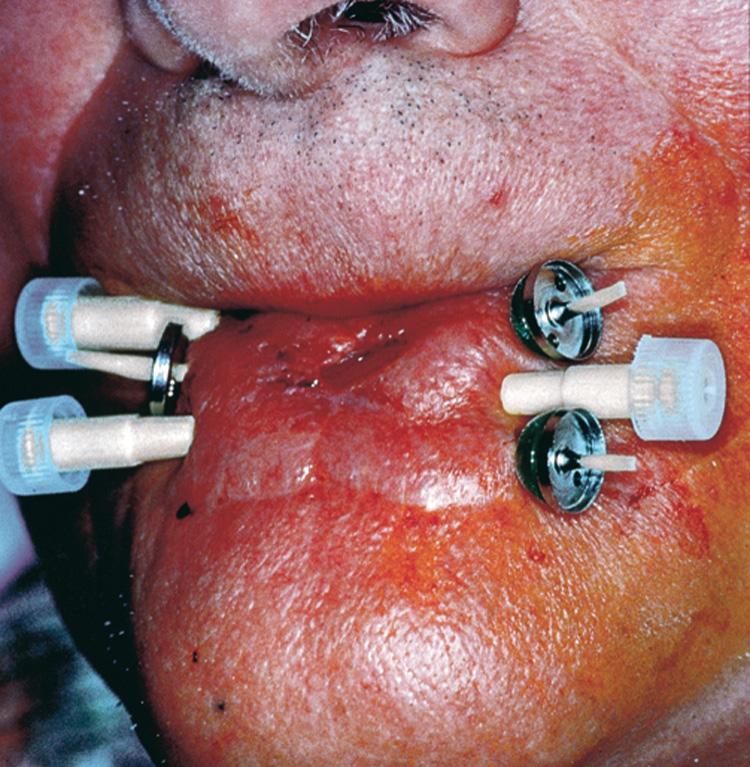
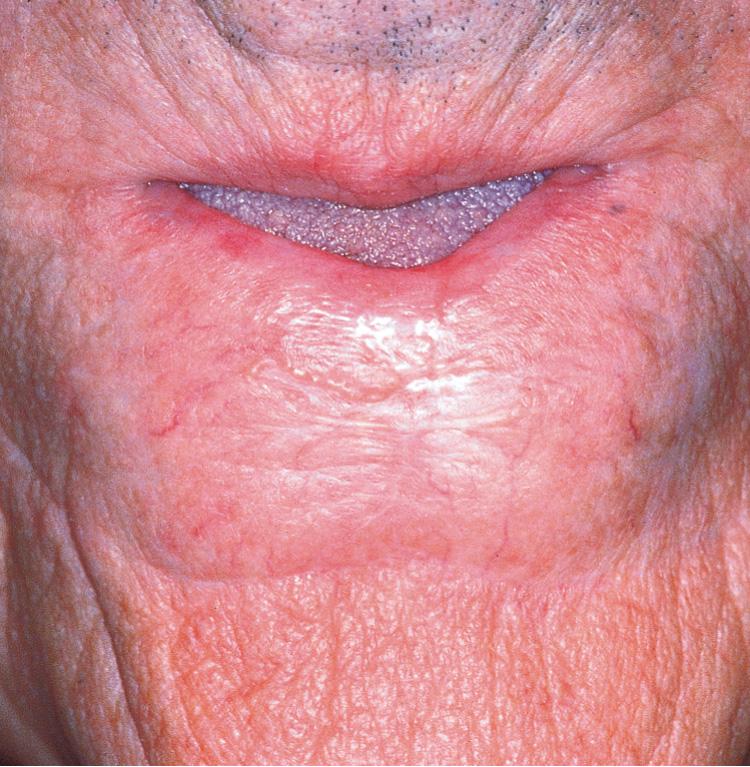
The upper lip is formed by the fusion of lateral maxillary processes and a central nasofrontal process. This embryonic fusion leads to the presence of a central midline mass with two lateral larger segments. Because of the separation of the lateral segments, contralateral neck metastasis from upper lip cancer is exceedingly rare. On the other hand, the lower lip is formed by the fusion of two lateral mandibular processes in the midline, which puts lower lip cancers at increased risk of contralateral neck metastasis. Blood supply to the lips is provided by the superior and inferior labial arteries and branches of the facial artery on each side. The labial arteries form an arcade around the oral cavity in such a way that lesions in the lateral aspect of the lip receive blood supply both from its medial and lateral regions. Sensory supply to the skin and the vermilion border of the upper and lower lips is provided by the maxillary and mandibular divisions of the trigeminal nerve, respectively. Oral competency is the primary function of the orbicularis oris muscle, which also works in concert with the levators and depressors of the commissures to provide facial expression in addition to their contribution to oral competency. In surgical treatment planning, restoration of the purse-string function of the orbicularis oris muscle is crucial for maintaining oral competency. Muscular control of the orbicularis oris, the levators, and the depressors of the oral commissure is provided by the facial nerve. Lymphatic drainage of the lips is well defined and follows a predictable pattern for metastatic dissemination. Lesions of the lateral aspect of the upper lip first drain to buccal, periparotid, and prevascular facial lymph nodes overlying the body of the mandible. Lymph node metastasis occurs at level I in the submandibular triangle and then into the deep jugular chain. Lymphatics of the lower lip initially drain to lymph nodes at level I in the submental (Ia) and submandibular (Ib) regions and to the prevascular facial lymph nodes overlying the body of the mandible. Lymphatics of the lower lip often cross the midline and drain to the contralateral lymph nodes. Therefore bilateral metastasis to level I lymph nodes is not uncommon. Subsequent dissemination of metastatic disease occurs to deep jugular lymph nodes at levels II and III. Metastatic dissemination to level IV and level V is exceedingly rare.
The approaches for surgical resection of neoplasms of the lips are categorized by the methods used to restore the surgical defect. Thus they are (1) resection and primary closure, (2) resection and reconstruction with local flaps, and (3) resection and reconstruction with free tissue transfer. Limited lesions (T1 and T2) of the upper or lower lip are easily treated with a wedge resection and repaired with primary closure, particularly in older patients. Early stage lesions of the oral commissure require special consideration in reconstruction to avoid a rounded commissure. Lesions that create a surgical defect not suitable for primary closure by virtue of size or location require reconstruction with local flaps from adjacent skin and soft tissues or the opposing lip. Larger defects of the upper lip, lower lip, or commissure and composite defects, including the underlying mandible or maxilla, require complex reconstruction with composite free tissue transfer.
Become a Clinical Tree membership for Full access and enjoy Unlimited articles
If you are a member. Log in here